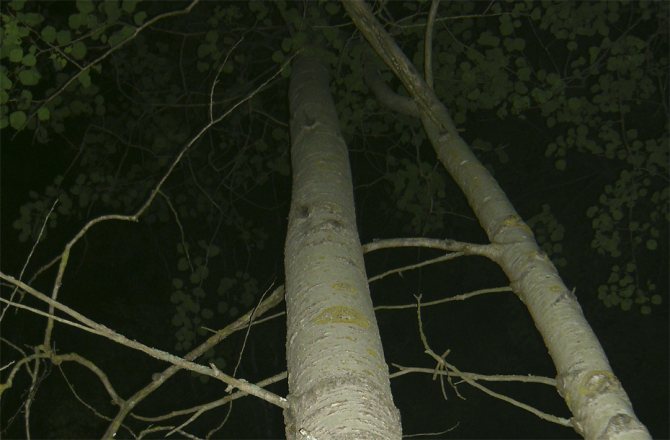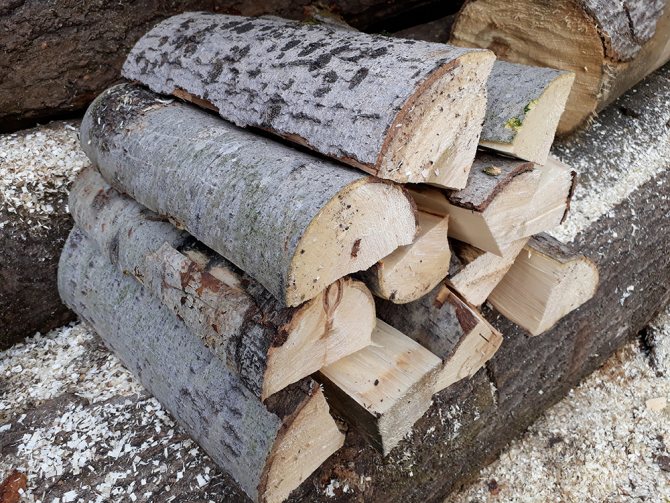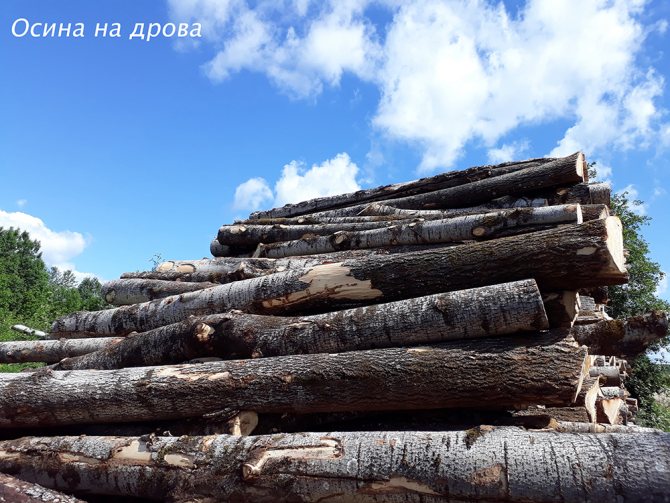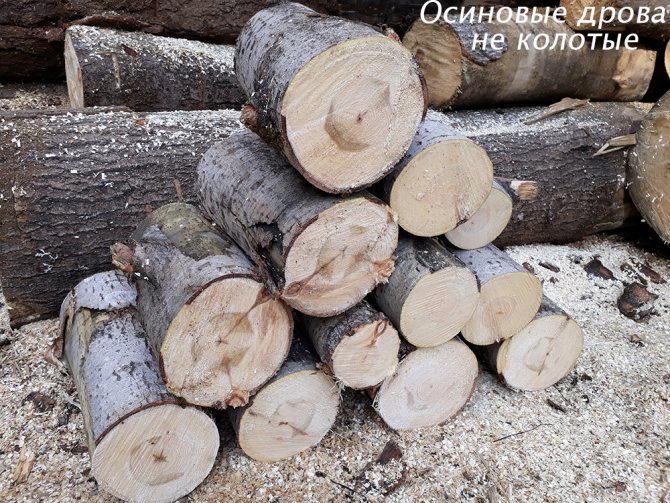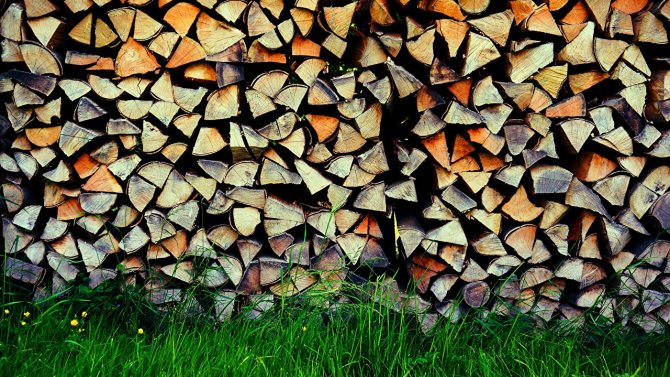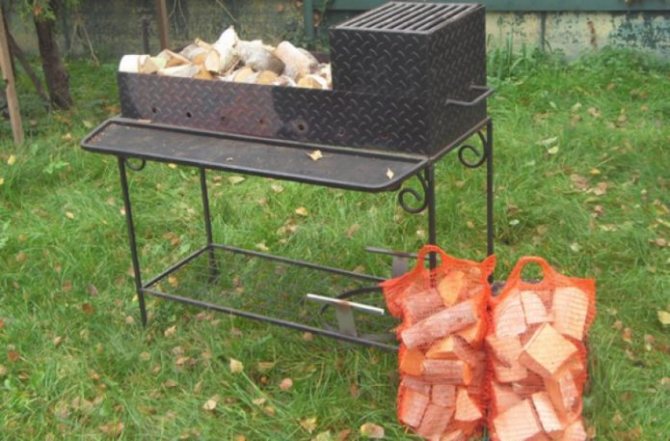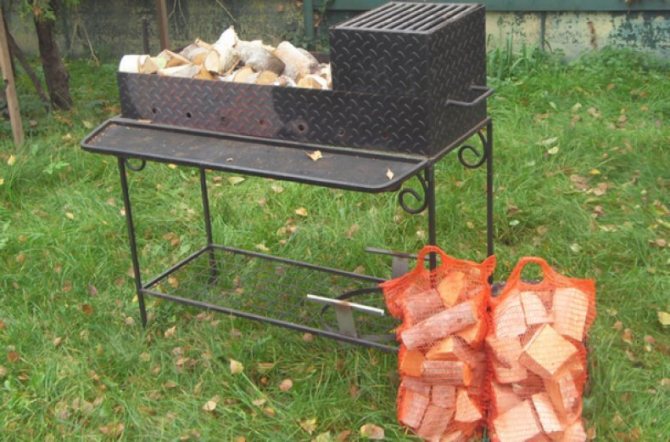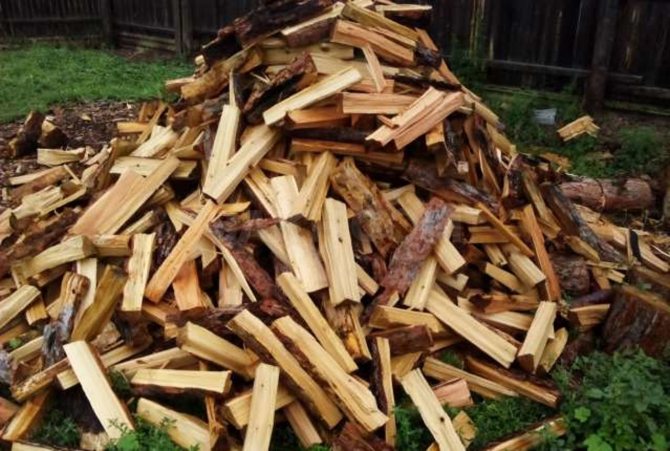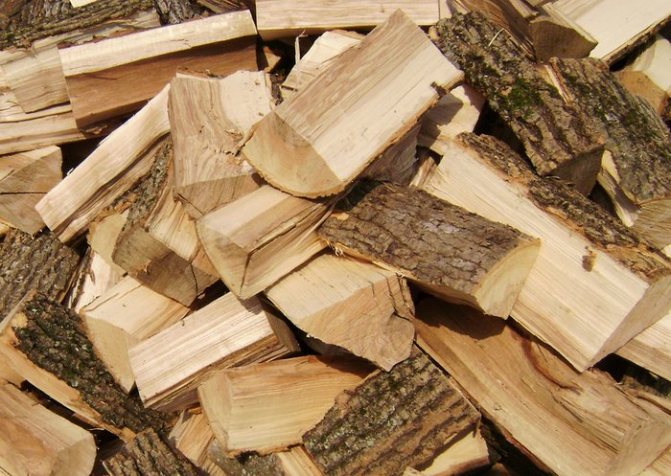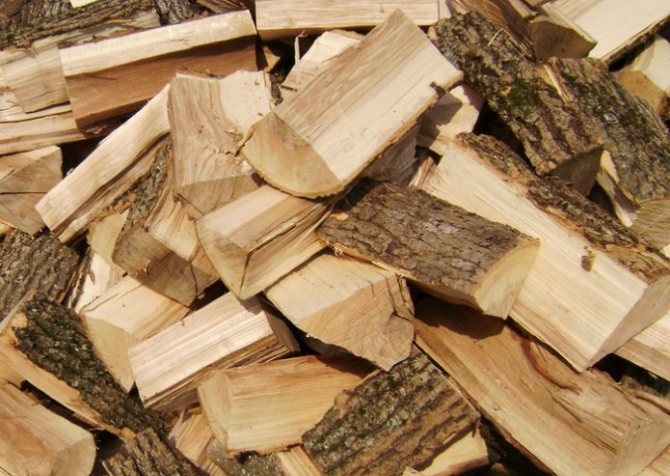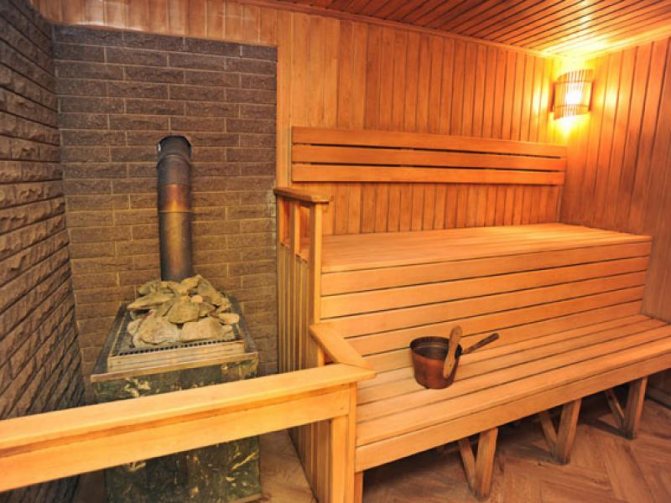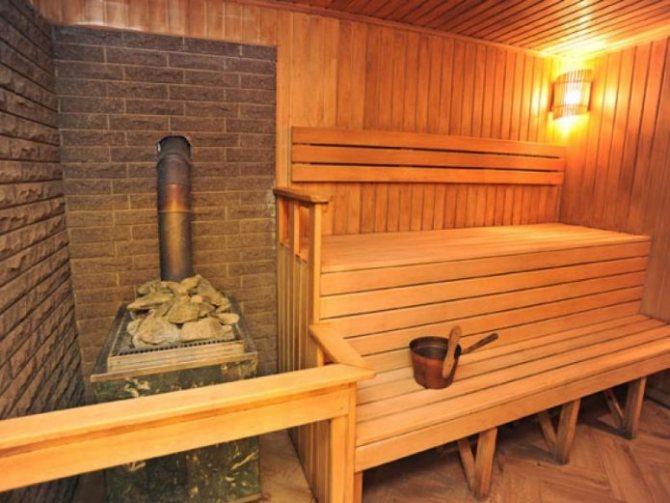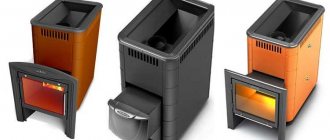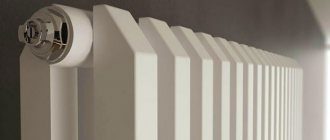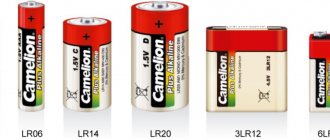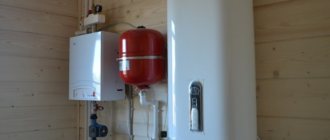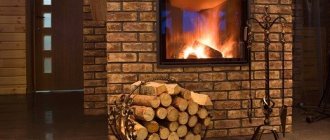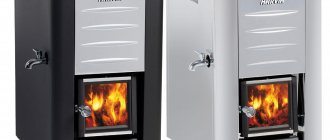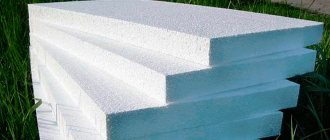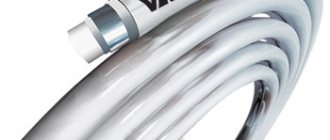It is a priori pleasant to contemplate a live fire in your stove, it creates a cozy and comfortable atmosphere throughout the house, but do not forget that its main task is to heat the room. The efficient operation of the stove will allow you to warm up the space of the house at any time of the year, to melt the sauna.
It is advisable that the kindling of the furnace does not take much time, and the heat from it, on the contrary, would be delayed for a long time. This can be done by choosing the right fuel, in particular firewood. In this article, we will talk about what kind of wood is better to heat the stove, dwell on different types of wood, study deciduous and coniferous options and specific types of wood.
Nice burning fire in the stove
Firewood characteristics
It is not always appropriate to compare heating a house with a stove and electricity or gas, since the stove additionally creates an atmosphere of comfort, unique family coziness. How pleasant it is to hear the soft crackling of wood in the hearth in the silence of the thought, to feel the warmth emanating from it. Even in our time, these unique feelings are so pleasant to a person that a solid stove or a good fireplace is erected in almost every private house.
However, in order to effectively use the capabilities of the stove, you should understand wood burning. It turns out that not all tree species are equally good for a firebox, there are many nuances that significantly complicate the choice of firewood for the stove.
For example, for burning in a fireplace, it is advisable to find wood that, when burning, exude a pleasant aroma, but do not emit a large amount of tar, soot, soot. Resins in the composition of wood contribute to increased smoke output, as well as explosive cracking of logs with the release of large coals. For an open fireplace, such emissions will be unsafe, therefore, coniferous wood is not used in them.
Firewood for the stove is selected according to heat transfer, their main criteria are the intensity and duration of combustion. It is desirable that the wood burns with less smoke and leaves behind a minimum of ash.
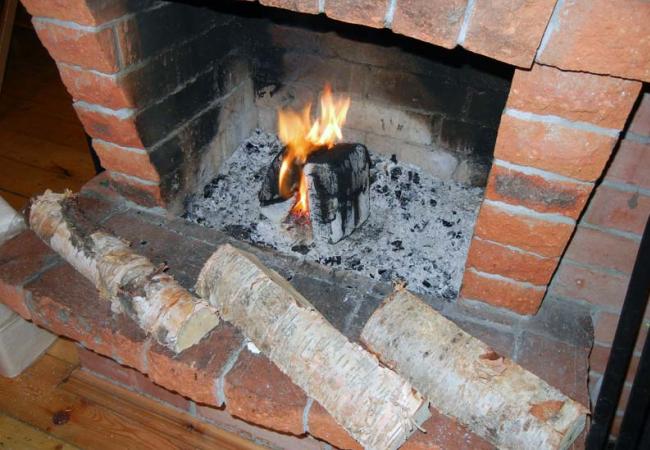
Wood to create fire
If we consider the optimal firewood for use in the oven, then they should have the following functionality:
- First of all, heat transfer, the highest possible for wood.
- The flammability of the tree should also be excellent, so that it would not be difficult to melt the hearth.
- When burning, firewood should not emit a lot of smoke and leave behind a small amount of ash.
To achieve such characteristics, it is important not only to choose the right type of wood species, but also to dry the harvested wood with high quality, to ensure its normal storage. Freshly cut wood is not used in ovens; to prepare it, it should be dried for some time, getting rid of excess moisture. Wet wood burns weakly, while emitting a large amount of smoke.
There is even a method for determining the sufficient dryness of wood for use in fireplaces or stoves. You should hit one log on another and listen to the sound. If it is sonorous, then it is quite possible to use such poleshki for heating the hearth.
It is believed that the best firewood for fireplaces and stoves is obtained if logging is carried out during the winter period. At this time, the trees are in a certain conserved state, as a result of which sap flow practically does not work in them. Worst of all, if the wood is harvested in spring or summer, when there is a lot of moisture in the wood, such a forest will dry for a very long time.
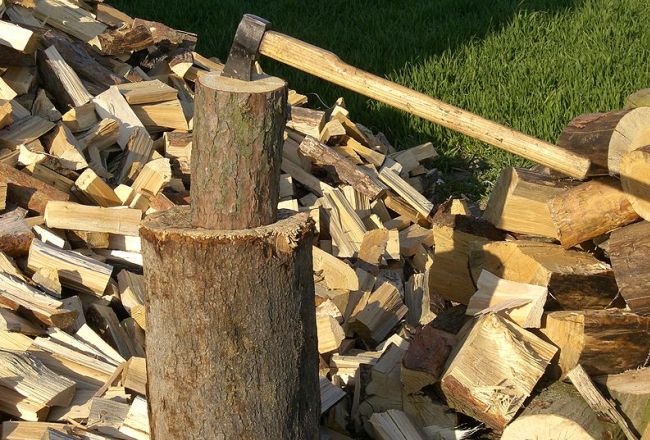

You can split firewood harvested in winter in summer
If we consider tree species, then it is best to choose deciduous options, since they have a fairly dense fiber structure. Such wood is capable of generating a large amount of heat for a long time. Most often, firewood is harvested from the following hardwoods: oak, birch, linden, alder, ash, aspen. Even fruit trees can be a good source of heat. In addition, the fragrant wood is perfect for use in a smokehouse or open fireplace.
Good to know: RUF fuel briquettes, main characteristics
Conifers burn well too, but since they contain a large amount of resin, they emit a lot of smoke and soot when burning. The needles burn quickly enough, but the heat is mediocre, therefore, for use in the oven at home, it is better not to consider this option too much, but to save the poles for the bath.
Basic storage rules
To get a quality product for kindling a hearth or fireplace, you need to cut down a tree in an ecologically clean area, where there are no exhaust gases and chemical production. Do not tighten with the separation of the trunk and crown in parts. It is important to dry the chocks outdoors with good ventilation under a canopy.
The next stage is a split into smaller elements. This makes the logs dry faster and are easier to store. It is logical that the thinner the wood, the faster it will dry. Therefore, it is better not to store them in the form of thick logs, but to chop them in the form of thin logs. Also, for ignition, you will need brushwood - thin branches. Rows are laid in several ways:
- Each next row of blanks is perpendicular to the previous one. Inside the row, a gap must also be observed;
- All logs are folded in one direction, observing the gap between each workpiece;
- Laying in a circle. This method is called “haystack” and it involves stacking the wood in one direction. Under no method should brushwood and logs be stacked tightly: circulation will be disturbed, and they will begin to rot.
The woodpile is arranged in a well-ventilated space, under a canopy or dense material. The canopy should have support posts without walls to restrict air movement.
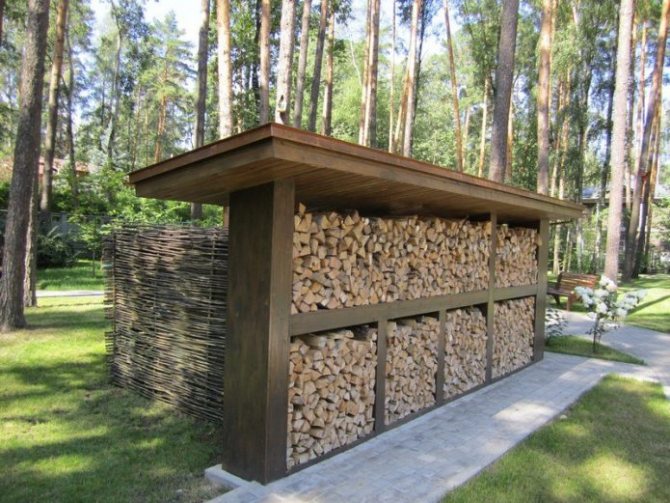

The woodshed must be covered with a roof to protect the wood from UV rays and precipitation
It is not recommended to store firewood in a shed. Lack of sunlight will cause moisture to build up, fungus will form, and the woodpile will start to rot. Also, you should not allow the ingress of atmospheric precipitation.
Before laying in a stove or fireplace, firewood must be kept in the living room for at least a day. They are located next to the stove, but not very close to the firebox (remembering about fire safety). For this, a special niche is provided or decorative floor fireboxes are used.
The best wood for kindling is dry. Therefore, you should carefully consider its preparation and storage. Whichever type of firewood is chosen for the stove, the most important thing is not to forget about the features and differences in the properties of deciduous, coniferous and fruit logs.
A fire burning in a stove gives a cozy atmosphere to any home. It is almost impossible to replace this with anything. But the main task of the hearth is not comfort, but a good heating of the living quarters. And it is firewood that plays an important role, since the rocks differ in heat transfer and other features.
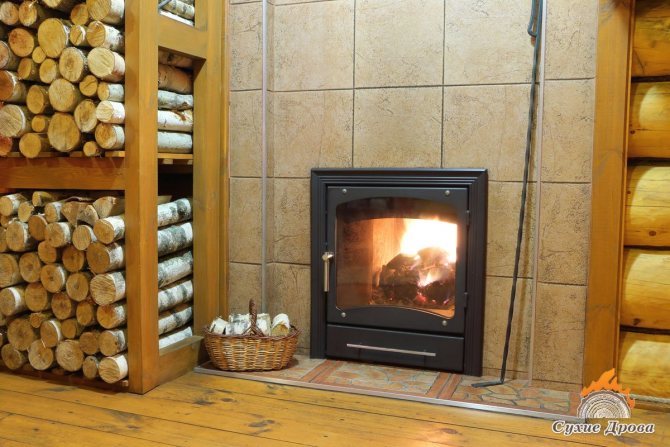

Hardwood firewood
In order to optimally choose firewood for a stove, based on specific needs, let's first consider the most popular types of deciduous trees for using them to heat a house.
Oak firewood. Experts have long noted oak firewood as wood with almost maximum heat transfer (oak is inferior to ash). At the same time, burning of oak takes a long time, which can significantly reduce the consumption of logs.These characteristics of oak are due to its dense, solid structure. Naturally, oak firewood is more expensive than all others, but the savings are seen in the ability to heat the room with less fuel.
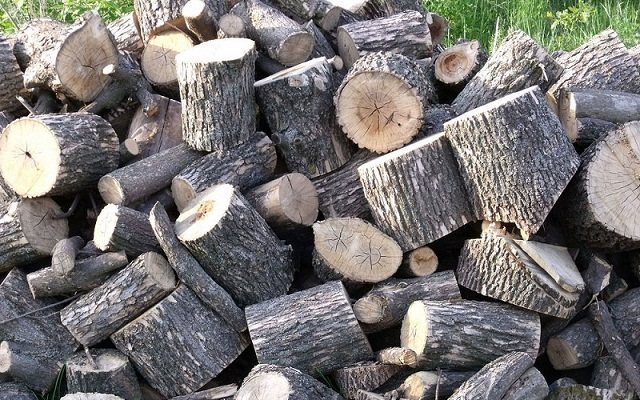

Harvesting oak wood
It is believed that a middle-aged oak should be used for harvesting, since it is at this time that its characteristics are maximum. When burned, such wood gives off a strong heat, as well as a very pleasant, characteristic aroma of the forest. Oak wood is actively used for stoking open fireplaces, they allow you to create a pleasant atmosphere in the room, filled with the healing aromas of the forest.
Interesting fact: true Italian pizza is baked in the oven on exclusively oak wood. Italy is not rich in this type of firewood, so oak wood is very valuable in this country.
Ash has similar characteristics, as well as fruit trees such as apple or pear, but they should also be harvested at a certain middle age.
Birch firewood. The next very popular wood we will look at is birch. Birch firewood is actively used for stoves in baths, since it not only gives an excellent heat and aroma, but is also endowed with disinfecting properties. In addition to this, the sauna heated with birch wood is full of healing properties, it perfectly helps to cope with colds, chronic respiratory problems.
However, there are some nuances when harvesting birch. It has long been proven that firewood from this tree loses its main properties after 2-3 years of storage. This can be determined by the appearance of the log; it becomes rotten. You should not expect strong heat from such firewood, and the classic aroma from them completely disappears.
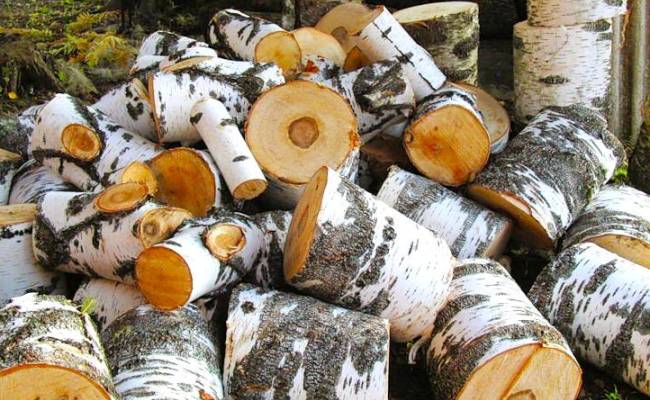

Harvesting birch firewood
A large amount of tar is present in the composition of birch wood and its bark. You can observe it during the combustion of the bark, when it begins to emit black clouds of smoke. Tar is a carbon compound, so it can catch fire instantly and burn with great intensity. At the same time, after combustion, there is practically no ash from the birch. Birch bark and wood splinters are often used for kindling stoves, since such wood burns even wet.
Good to know: How to heat the stove with fuel briquettes, how to light them
If we compare birch and pine firewood or with alder wood, then in terms of heat transfer they are 25-30% higher.
Alder firewood. Alder wood can be immediately recognized by its characteristic color, which can be orange, red, bluish, ocher. Different colors indicate a specific species of alder, and at the moment there are about 20-25 of them. In ancient times, alder firewood was called "royal", since for many centuries it was used to heat the homes of the nobility.
Alder firewood has a wonderful property, it dries on its own under normal storage conditions. This property is most often characteristic of alder, which grew far from rivers, lakes, in soil with a small amount of moisture.
Another remarkable property of alder lies in its unique aroma, which the wood retains for 2-3 years of storage. After this time, the aroma during combustion will be negligible, but the level of heat transfer will not change. In ancient times, alder was actively used for heating baths in black, since when burned, it practically does not emit smoke. It is believed that alder wood helps to clear the chimney from soot, emitting a certain type of fumes during combustion.
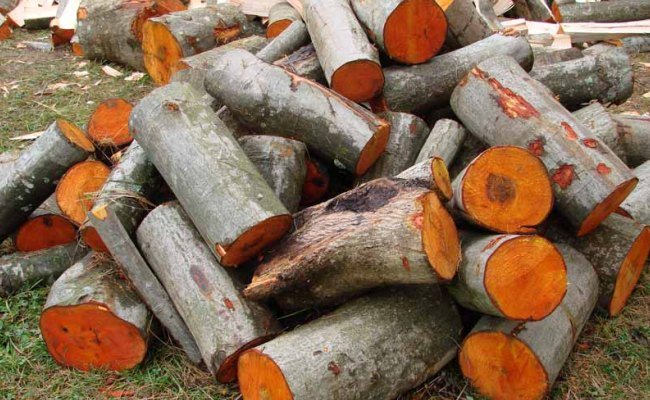

Alder firewood collection
Possessing a unique aroma, alder is actively used for smoking meat and fish, not without reason when harvesting alder, sawdust is collected for future use.
Ash firewood. Ash wood is rarely found on sale and is expensive, since in terms of its heat transfer this type of wood is comparable to oak, and even slightly surpasses it. Ash is harvested with certain problems, because of its solid structure it is very difficult to saw it into pieces.
Note that ash burns perfectly even wet, while it does not spark and gives a uniform flame. If you need to light the stove with damp wood, use ash or birch. If you find such firewood at an affordable price, be sure to purchase it.
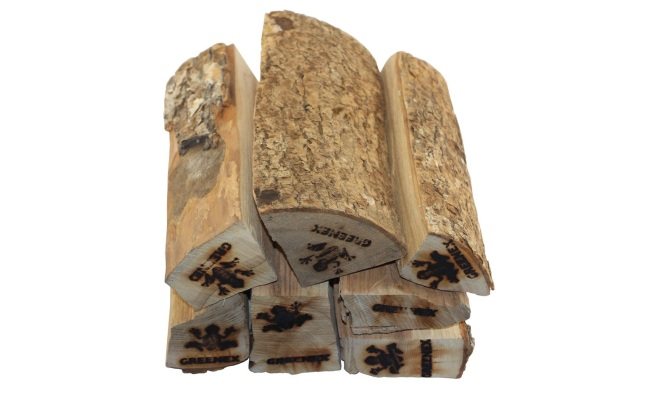

Scarce ash firewood
Linden firewood. Experienced owners can use linden wood for quick kindling of stoves. The wood of this tree is quite difficult to set in a fire, but then burns very intensely, giving off a large amount of heat, which contributes to the rapid heating of the stove. This property is perfect for wood for a bath, the main task of which is to prepare excellent conditions for relaxation in a short time.
In addition, like birch wood, linden has healing properties, it helps with colds and respiratory diseases. It is believed that if you add a few tablespoons of honey to the linden tree, the resulting combined aroma and steam will heal old, poorly healing wounds.
Linden firewood does not lose its properties for about two years after cutting the tree. In the third year, the medicinal and thermal characteristics of wood gradually fade away.
Good to know: How to prepare firewood for the winter, how to chop and dry the forest with your own hands
Aspen firewood. Aspen firewood resembles alder in its functionality, at least they also effectively fight soot in the chimney. When burned, aspen practically does not emit smoke; characteristic steam comes out of it. This steam has a beneficial effect on the soot, which softens and leaves the walls of the chimney. When burning aspen wood inside the stove, you can hear soot falling into the firebox or blowing.
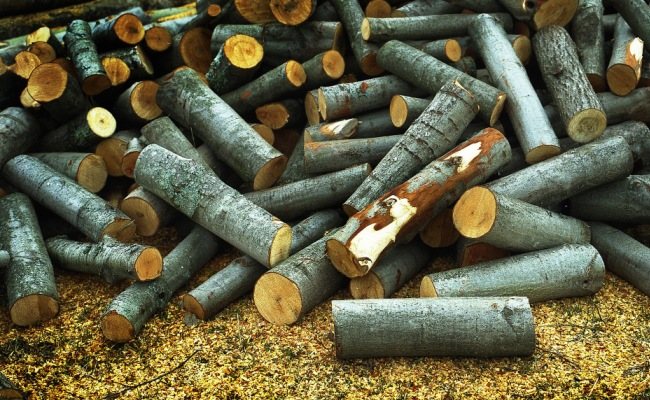

Harvesting aspen firewood
At the same time, the heat transfer from burning aspen is small and is unlikely to be sufficient for full heating of the room. Therefore, such firewood is used exclusively for preventive purposes. Aspen firewood for the stove will be extremely necessary if it was previously heated with conifers.
Willow and poplar firewood. Poplar and willow firewood have one drawback. They are rarely used for heating stoves, since they burn out very quickly. To heat a room with such wood, it is necessary to use a lot of them, so even a low, attractive price is not able to focus attention on them.
Experts have long classified willow and poplar firewood as low-grade, which are used in rare cases when there is no normal wood species available.
Firewood from fruit trees. You rarely find firewood from fruit trees, but according to their characteristics, they are very good. Such wood in the stove will easily warm the house, but most often this wood is used for fireplaces or smokehouses due to their exclusivity. To meet such firewood is a rarity, because most often they appear after cutting down old gardens.
This is important to know!
Regardless of the type of trees that will be used for firewood, you need to know about some of the features:
- Timing. Of course, those logs that have already passed their "due" period will also burn (provided that they are dry and there is no mold on them). However, most trees retain their aroma only for two years. Alder and aspen in this regard are a pleasant exception - 3 years.
- Everything has its time. In winter, the moisture content of the trees is at a minimum. In this regard, the preparation of firewood must be dealt with during this period. It usually takes about 12 months to dry. However, the timing depends on the type of forest, harvesting time, storage conditions and a number of other factors. In this case, the duration can significantly increase or, conversely, decrease.
- Dimensions. What kind of firewood is more profitable? Of course, those that have the optimal size.And this is 40-50 cm in length and 8-10 cm in thickness. So it is convenient to store them and are suitable for any firebox.
- Rot. In no case should rotten wood be used. A long stay of logs on the ground ends with the accumulation of toxic substances released during combustion, which is not beneficial to humans. For this reason, when cutting branches, you should immediately take the correct measures for their storage. When choosing raw materials for a firebox among dead wood, you should not take into account long-fallen branches.
- Storage issues. The logs should be stacked with the bark facing up. This will protect the wood from accidentally ingested moisture, which evaporates faster from the surface of the bark. And if you show your imagination, you can build an original woodpile to the delight and surprise of the guests.
As you can see from this material, it is not enough to know which firewood is best for the stove.
It is equally important to observe the correct storage.
Coniferous firewood
Softwood contains a large amount of resin, which contributes to a fast and intense combustion with a lot of smoke and soot. Regular use of coniferous wood contributes to the formation of thick layers of soot on the walls of the chimney.
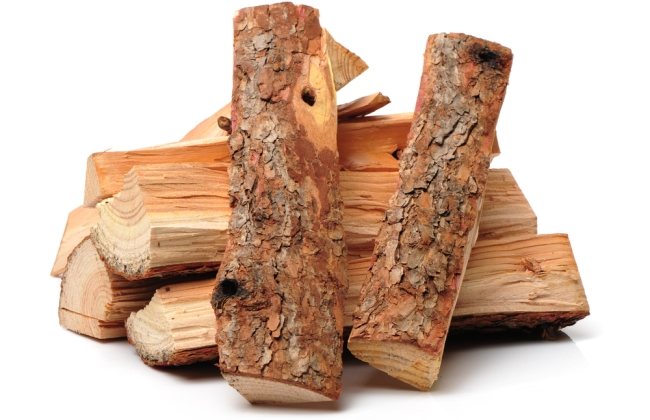

Coniferous firewood logs
That is why coniferous wood is practically not in demand for heating houses; it is used for kindling stoves in baths. The melted hearth with pine needles fills the steam room with a classic spruce aroma, which soothes the nerves and has a beneficial effect on the respiratory system. The forest coniferous aroma appears due to the essential oils present in the composition of the needles. When burned, spruce and pine firewood emits a characteristic crackling sound that many people like.
Note that burning coniferous firewood is difficult to extinguish, and the embers flying out of them make this wood the most fire hazardous. Therefore, it is best to heat a closed stove or fireplace with pine or spruce wood.
After analyzing all existing types of wood, you can easily find the best firewood for heating stoves in your home and baths. Use different types of trees, find the best solution for a specific situation. Enjoy the pleasant aroma, warmth and coziness that burning wood firewood gives you.
USEFUL INFORMATION ON THE PROPERTIES OF WOOD
Accounting is carried out by the volume of firewood in stacks (woodpiles). The quality of the woodpile depends on the layout used, it is considered optimal if the weight of the wood is approximately 70% of the cubic capacity. The higher the proportion of firewood in the woodpile, the more profitable the purchase.
Below is the ratio of a cubic meter of birch firewood to competing wood:
- 1.5 cubic meters of aspen;
- 1.3 cubic meters of spruce.
- 1.2 cubic meters of pine;
- 1.1 cubic meters of alder;
- 0.75 cubic meters of oak;
Suppose the logs will occupy the entire volume of the woodpile, in which case the mass of a cubic meter of wood (we take the relative humidity as 20%) will be:
- oak - 725 kg;
- birch - 671 kg;
- pine - 530 kg;
- aspen - 505 kg;
- spruce - 475 kg.
The chemical components of different species are similar, wood is approximately half carbon. Therefore, the heat of combustion of wood of different species (subject to the same moisture content) is close and amounts to approximately 18700 kJ (about 4500 kcal). Fluctuations between rocks do not exceed 3-5%. At the same time, the calorific properties of logs per cubic decimeter differ and on average show the following figures:
- birch - 11000 kJ (2700 kcal);
- alder - 8500 kJ (2100 kcal);
- aspen - 7200 kJ (1750 kcal);
- pine - 7600 kJ (1850 kcal);
- spruce - 7200 kJ (1750 kcal);
- oak - 13500 kJ (3100 kcal).
The heat of combustion of 100 kg of dry wood is approximately equal to:
- 31 kg of oil;
- 42 kg of hard coal;
- 54 kg of dry peat;
- 121 kg of semi-dry peat.
The main recommendation is to avoid wood that contains too much resin so as not to clog the boiler and chimney.Otherwise, the question of what kind of wood to heat the boiler with depends on the availability of this or that wood in the place of residence of the owner of the solid fuel boiler. published by econet.ru
Join us at, Odnoklassniki

